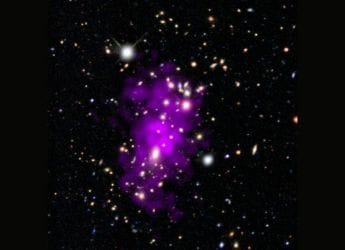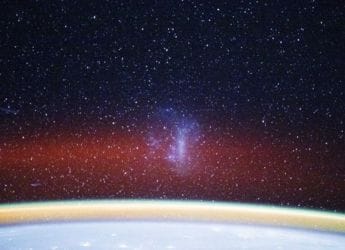- Home
- Science
- Science News
- NASA James Webb Space Telescope Challenges Assumptions Made by Standard Cosmological Model
NASA James Webb Space Telescope Challenges Assumptions Made by Standard Cosmological Model
The James Webb Space Telescope has raised intriguing questions about the universe, potentially challenging existing cosmological models.

Photo Credit: X-ray: NASA/CXC/SAO
Researchers are examining measurements from TRGB and JAGB stars, yielding mixed results.
Cosmology stands at a potential turning point, with the NASA James Webb Space Telescope (JWST) poised to address longstanding issues in the field. For years, the standard cosmological model has been the gold standard, explaining the universe's composition as 68 percent dark energy, 27 percent dark matter, and 5 percent ordinary matter. This model has provided accurate predictions about cosmic structures and the distribution of matter, but recent observations are challenging its assumptions.
The Hubble Tension
A significant issue is the “Hubble tension,” which arises from differing measurements of the universe's expansion rate, according to an article published by The Conversation. Observations using Cepheid variables suggest a rate of 73 km/s/Megaparsec, while theoretical predictions propose 67.4 km/s/Megaparsec. This 8 percent discrepancy has led to debates about whether current measurements are biased or if the cosmological model needs revising. Despite the JWST's advanced capabilities, it has yet to definitively resolve this tension.
Researchers are now considering measurements from other types of stars, such as Tip of the Red Giant Branch (TRGB) and J-region Asymptotic Giant Branch (JAGB) stars, which have provided mixed results.
The S8 Tension
Another challenge is the “S8 tension,” which involves the predicted versus observed clumpiness of matter in the universe. The standard model suggests matter should be more clustered than observed, creating about a 10 percent discrepancy. One potential solution involves revising our understanding of dark matter, possibly incorporating fast-moving particles or considering the effects of galactic winds on matter distribution.
Looking Ahead
The JWST has also revealed that early galaxies appear unexpectedly massive, which could either indicate new physics or reflect limitations in current measurement techniques. Future observations, including those from the Dark Energy Spectroscopic Instrument (DESI) and the Vera Rubin Observatory, will be crucial in addressing these issues.
In summary, while the JWST has yet to provide definitive answers, it is clear that cosmology is at a crossroads. The next few years could either reinforce the existing model or usher in new physics, potentially transforming our understanding of the universe.
Catch the latest from the Consumer Electronics Show on Gadgets 360, at our CES 2026 hub.
Related Stories
- Samsung Galaxy Unpacked 2025
- ChatGPT
- Redmi Note 14 Pro+
- iPhone 16
- Apple Vision Pro
- Oneplus 12
- OnePlus Nord CE 3 Lite 5G
- iPhone 13
- Xiaomi 14 Pro
- Oppo Find N3
- Tecno Spark Go (2023)
- Realme V30
- Best Phones Under 25000
- Samsung Galaxy S24 Series
- Cryptocurrency
- iQoo 12
- Samsung Galaxy S24 Ultra
- Giottus
- Samsung Galaxy Z Flip 5
- Apple 'Scary Fast'
- Housefull 5
- GoPro Hero 12 Black Review
- Invincible Season 2
- JioGlass
- HD Ready TV
- Laptop Under 50000
- Smartwatch Under 10000
- Latest Mobile Phones
- Compare Phones
- OPPO Reno 15 Pro Max
- Honor Win RT
- Honor Win
- Xiaomi 17 Ultra Leica Edition
- Xiaomi 17 Ultra
- Huawei Nova 15
- Huawei Nova 15 Pro
- Huawei Nova 15 Ultra
- Asus ProArt P16
- MacBook Pro 14-inch (M5, 2025)
- OPPO Pad Air 5
- Huawei MatePad 11.5 (2026)
- Xiaomi Watch 5
- Huawei Watch 10th Anniversary Edition
- Acerpure Nitro Z Series 100-inch QLED TV
- Samsung 43 Inch LED Ultra HD (4K) Smart TV (UA43UE81AFULXL)
- Asus ROG Ally
- Nintendo Switch Lite
- Haier 1.6 Ton 5 Star Inverter Split AC (HSU19G-MZAID5BN-INV)
- Haier 1.6 Ton 5 Star Inverter Split AC (HSU19G-MZAIM5BN-INV)

















